“FSA presents its first drivetrain: after years of study and development, K-Force WE is ready to ride. K-Force WE is a high-tech electronic groupset with an elegant design. A unique product that will make you change the way you ride your bike. Long battery life, different size levers and wireless technology at the shifters for smooth, quiet and precise shifting.”
If you didn’t catch it, FSA has been working away quietly on their “WE” electronic drivetrain for some time. It was spotted in various iterations on Euro pro roadie bikes during 2015 and earlier, but finally made an “official” appearance at the 2016 Eurobike and Interbike trade shows.
One year later, FSA’s WE group still isn’t available for retail purchase, but a reliable source has told me “very soon”. Since that time, the designers and engineers at FSA haven’t exactly been sitting around on their hands. FSA has developed a hydraulic brake version of the FSA WE groupset, which I got hands-on with at the recent Cyclofest event in Charlotte, North Carolina. For the number crunchers out there, this would make the fourth electronic groupset to be released by a big-name manufacturer – electronic shifting is here to stay.
FSA’s WE system works as follows. Pictured above, you have the hydraulic brake / shifter levers which resemble most ordinary brake levers. They are similar in design and function to Shimano’s Di2 brake / shifter levers.
On the right shifter, a toggle switch controls shifting up and down the cassette. The top portion of the switch shifts up the cassette, to an easier gear, and the bottom to a harder gear. This design is very simple to operate with or without full finger gloves – there is almost no chance of getting a shift wrong. The same shifting functionality applies to the left shifter, albeit for switching between chainrings with the front derailleur.
Unless the weather is cold and miserable, I ride sans gloves. The hood and lever shape are extremely comfortable and bode well for big miles / kilometres in the saddle.
Carbon fiber is used extensively in the construction of FSA’s WE shift / brake levers. FSA is making two lever sizes available – regular and compact.
Hidden from view is the CR2032 coin cell battery that resides inside each shifter. These commonly available but diminutive batteries provide power to the shifters, allowing them to wirelessly communicate with the derailleurs. Claimed weight is 308 grams for the pair (mechanical brake version).
Close up details of the shifter switches.
This angle shows off the brake lever shape.
The front derailleur is the brains of FSA’s WE groupset and uses the ANT, ANT+ and Bluetooth protocols for communication. At the time of writing, I assume ANT+ is the one used for shifter commands, and I am doubly assuming it is encoded to prevent interference from other WE systems, or the potential of a naughty hacker.
The derailleur is the braze-on type, supports at 16 tooth difference between chainrings and tips the scales at 162 grams. Note the important part I mentioned earlier – the front derailleur is the brains of FSA’s WE operation. That means if you’re looking to build a 1X drivetrain, you’ll have to look elsewhere.
The front derailleur has various buttons and LED lights which are used to configure the system. According to the FSA marketing representative on-hand at the time (sorry guv, I don’t have your business card handy), the system is extremely simple to set up – less than five minutes for most people. A big plus for making it easy! Additionally, the front derailleur automatically adjusts its trim, ala Di2.
The FSA WE derailleur is a compact and tidy unit.
FSA’s WE rear derailleur has a maximum tooth capacity of 32 teeth and features “energy saving compositite pulleys”. In fact, much of the derailleur appears to be manufactured from composite / carbon fiber materials. The derailleur weighs in at 216 grams.
Now, this is the interesting part about the FSA WE system. It is a hybrid electronic drivetrain. Huh? How does that work? yLike a Toyota Prius that features an electric motor, battery and gasoline engine, only half of the FSA WE system is wireless. The front and rear derailleurs are joined together by a wire, which in turn is connected to a decently sized battery, hidden from view inside the seatpost (sorry, no photos of that).
The shifters communicate wirelessly to the derailleurs, thus forming a hybridized electronic drivetrain.
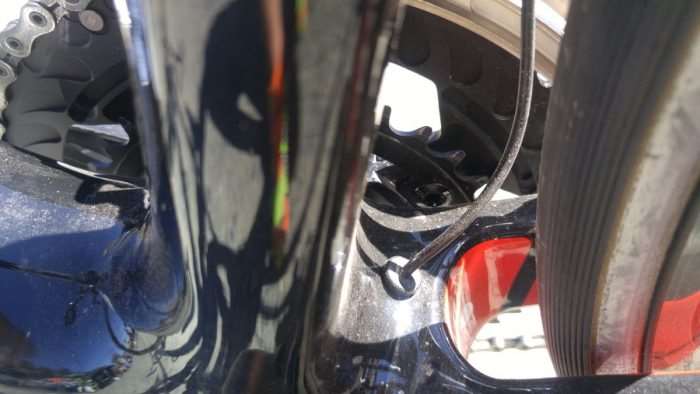
The big advantage is battery life. As a long-time user of SRAM’s eTap system, I’ve been disappointed by eTap’s battery life (I really need to produce my part two video about eTap… as it relates to gravel). With eTap, each derailleur has its own battery. Not so with FSA’s WE system.
The single battery and derailleurs are all linked together by wire(s). The battery is physically much larger than SRAM’s eTap ever could be. SRAM’s eTap does a great job functionally, but those tiny, individual batteries that power the eTap system cannot get any larger without affecting the form of their derailleurs.
Rather than having three points of wireless communication, you only have two. Even though these systems enter a sleep mode of sorts, they are still burning energy waiting for a signal to fire into operation. That is best explained as follows:
SRAM eTap
Shifters: I’m sleeping. I think our owner went to bed.
Front Derailleur: Yeah, I’m knackered, time to sleep.
Rear Derailleur: Ditto, good night!
Shifters: I’m awake, our owner pressed my buttons.
Front Derailleur: OK, guess I’d better wake up then.
Rear Derailleur: Bollocks, I need coffee and my battery is dead. All of that sitting around for a month doing nothing kinda drained me.
FSA WE
Shifters: Time for a nap.
Front Derailleur: Good idea.
Rear Derailleur: Hey front derailleur, we’re joined at the hip. You sleep, I sleep, and our mate, the battery, he’s also connected to us.
Battery: I’m connected like an umbilical cord to you guys.
Shifters: Time to wake up.
Front Derailleur: Bloody alarm went off. Yo rear derailleur, chop chop. Feel me tugging on the cable that connects us?
Rear Derailleur: Hey, I’m rested and ready to shift. And, I’ve got plenty of power, thanks to my pal, the connected battery!
Battery: I’m so radiant.
So, that’s FSA WE in a nutshell. But, this article wouldn’t be any good unless I included an embedded video of the system in operation, right?!
Brakes and everything else in the WE groupset
Above is a photo of my left hand operating the right shifter. That’s not how you do it, but the right hand was busy taking the photo. The lever is pulled as far as it will go – brake pads are hard up against the brake rotor. Brake feel is superb, akin to a well-dialed rim brake. Shimano’s ST-785 shifters have a lot of lever throw before you feel brake – not the case with FSA WE. Chapeau!
Pictured above is the FSA WE front hydraulic brake caliper. I didn’t get a chance to ride the demo bike, but I would expect FSA has done their homework with these fine looking calipers.
Like the front, the rear caliper is the flat-mount style. I expect FSA won’t produce a post-mount compatible brake – rather, you’ll have to rely on a suitable adapter.
FSA’s logos won’t appeal to everyone, but the calipers are compact and look good, IMHO.
FSA has also developed their own brake rotors in the 6-bolt style. No word on the availability of center lock at this time.
Naturally, a crankset is part of a groupset, and FSA has plenty of these to choose from. The K-Force unit pictured above goes down to 50 / 34 chainrings, which is more suited to road use. I’ll have an article coming soon with more of FSA’s gravel friendly cranksets, and a review a little later of the company’s sweet, FSA SL-K Carbon Adventure crankset with 46/30 chainrings – a crankset I used at the 2017 Dirty Kanza 200 and fitted to the Orbea Terra review bike.
A prominent component manufacturer such as FSA also produces handlebars and stems. Their sister company Vision, produces some of the company’s higher-end offerings.
Above, FSA K-Force carbon fiber bottle cages.
FSA has commissioned Prologo to manufacture a special version of their Nack carbon-railed saddle, complete with the company’s CPC anti-slip treatment.
FSA also produces a line of wheels, but they aren’t the focus of this article.
A FSA Titanium / Steel 11-speed cassette is available with the groupset, in 11-25, 11-28 and 11-32, along with FSA’s own nickel-plated chain.
Finally, a few more photos of the FSA WE derailleurs.
FSA anticipate the hydraulic brake version of the WE drivetrain will begin trickling out commencing April of 2018.
Thanks for reading!


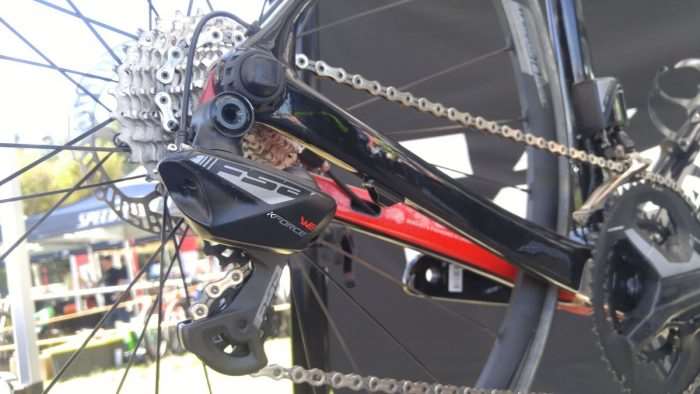
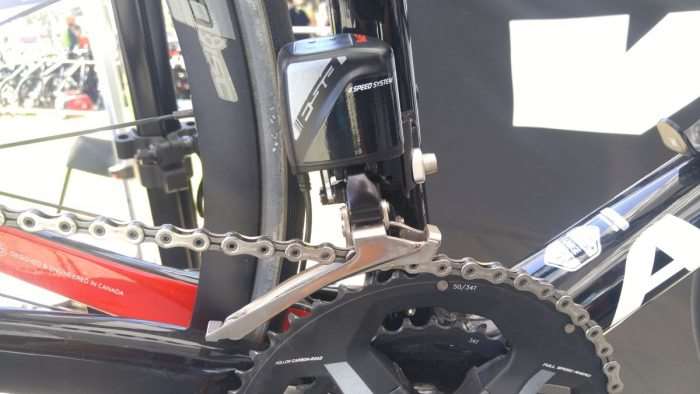
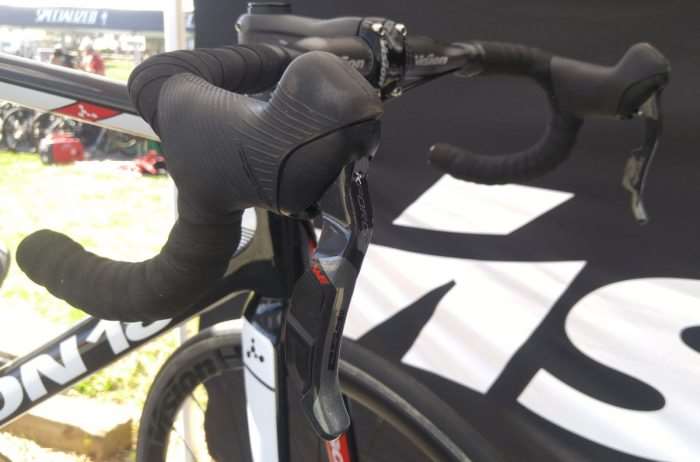
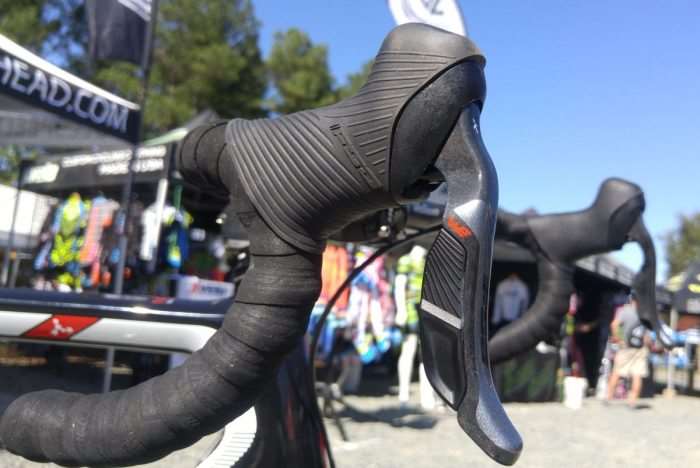
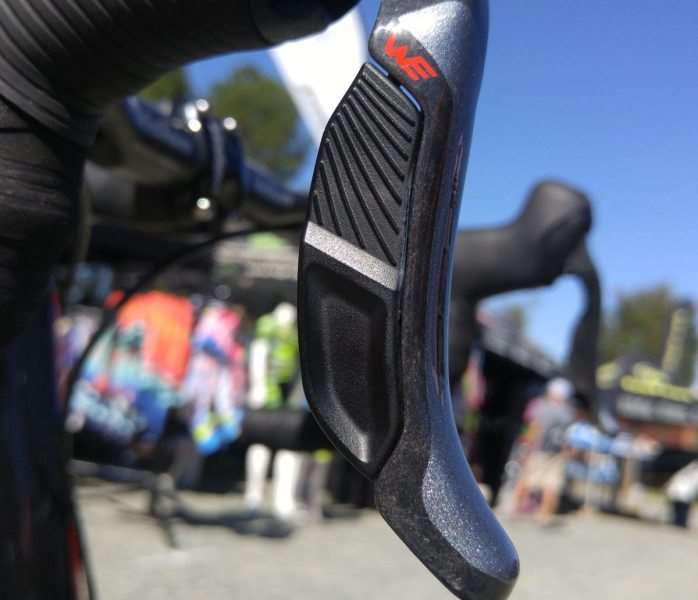
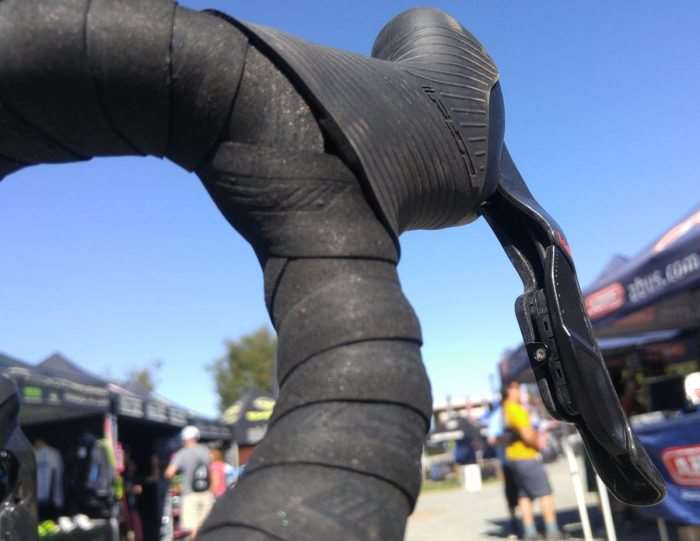
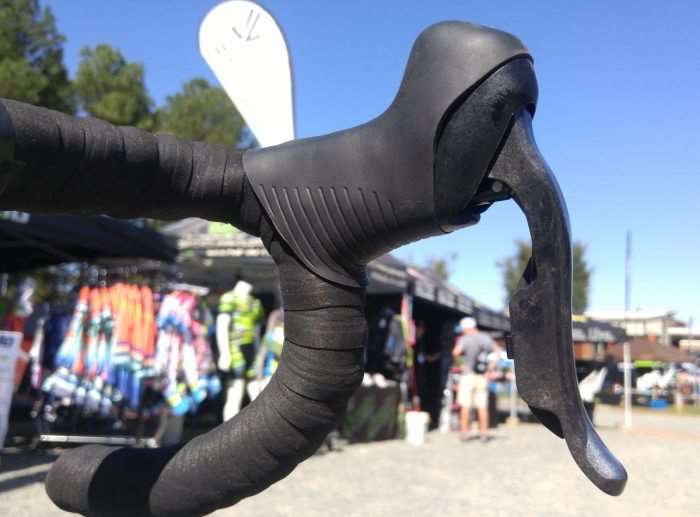
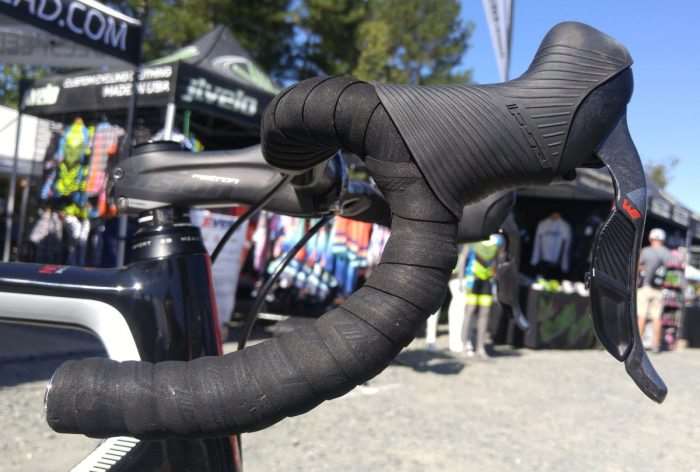
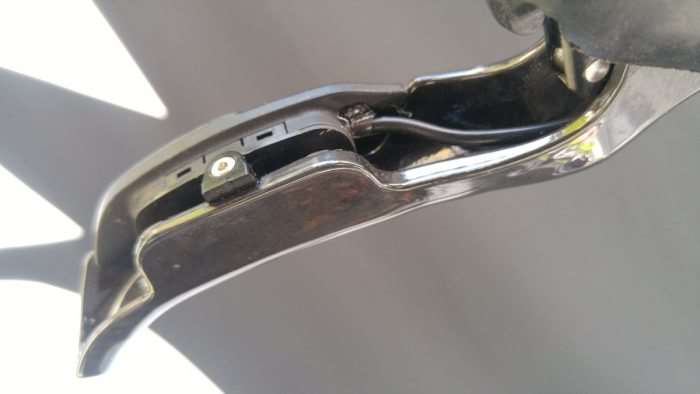
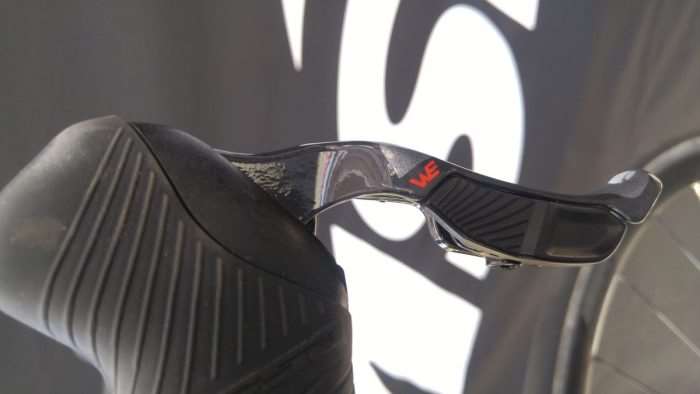
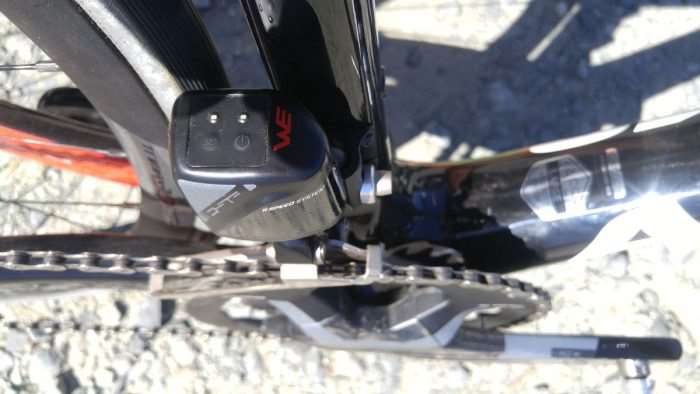
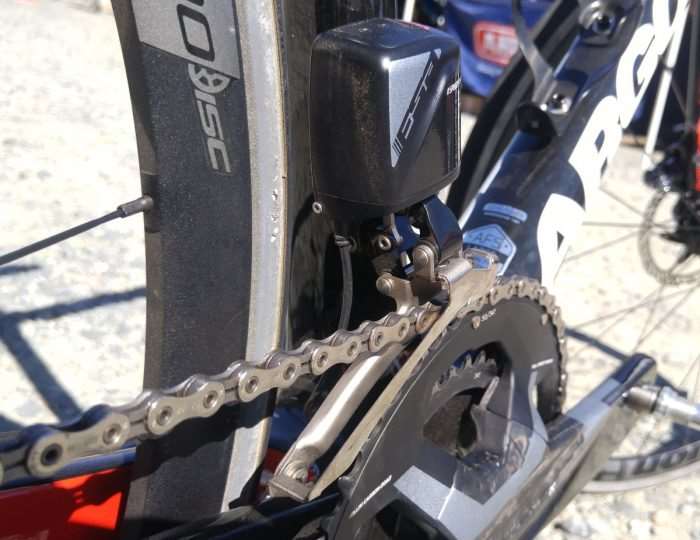
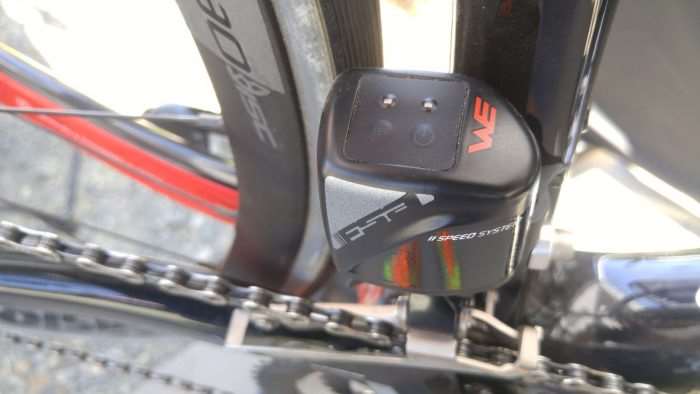
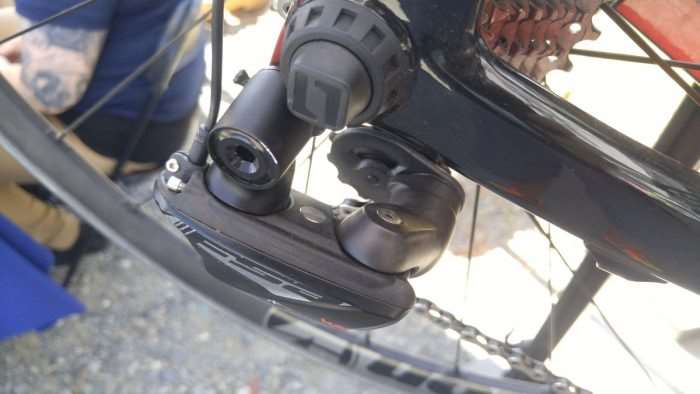
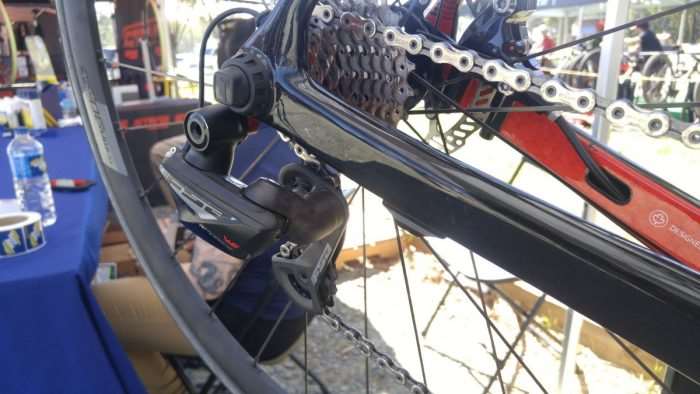
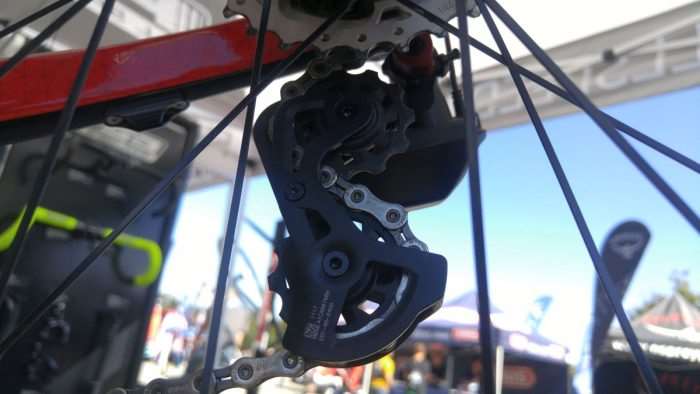
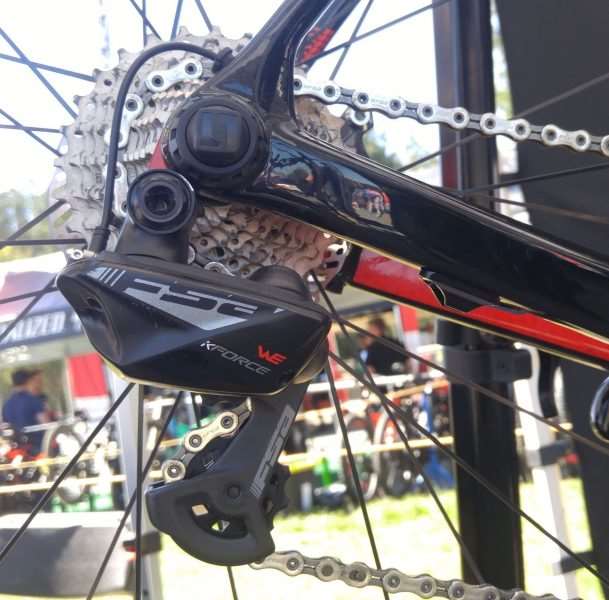
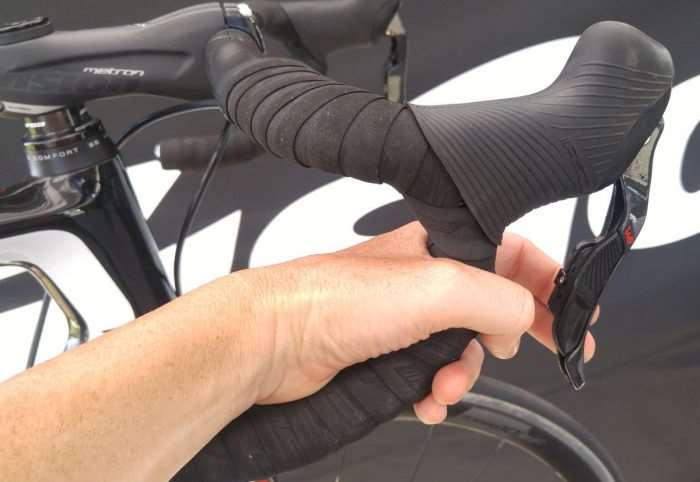
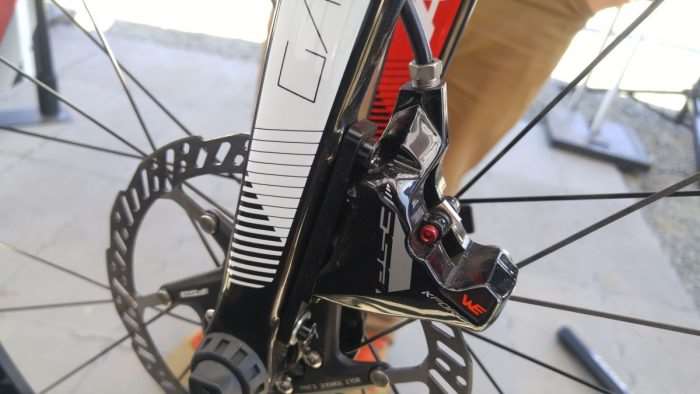
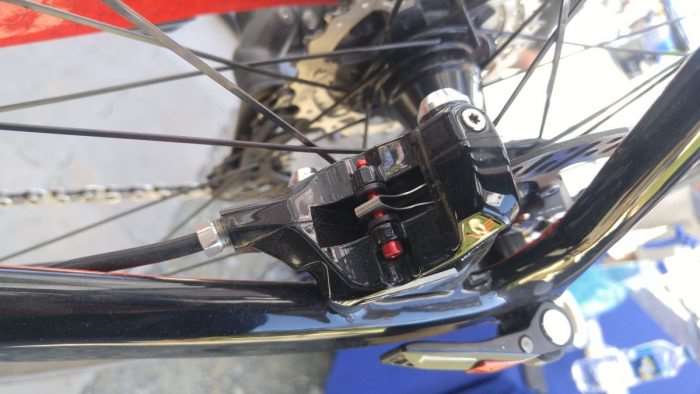
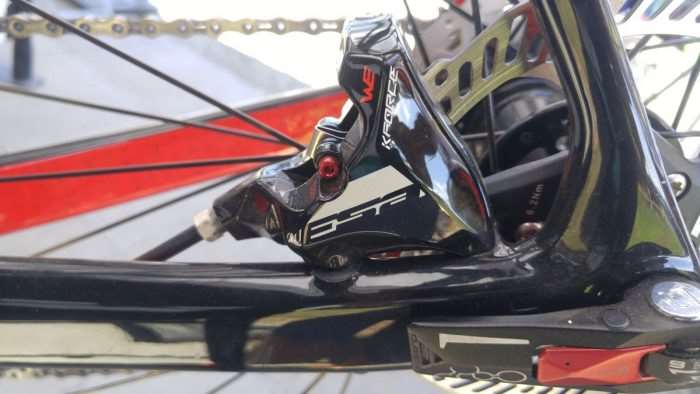
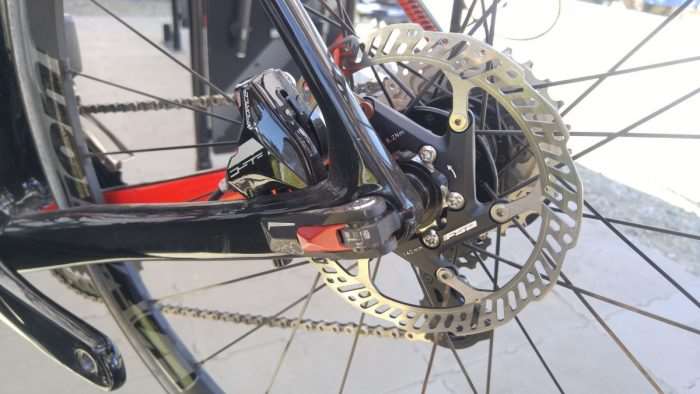
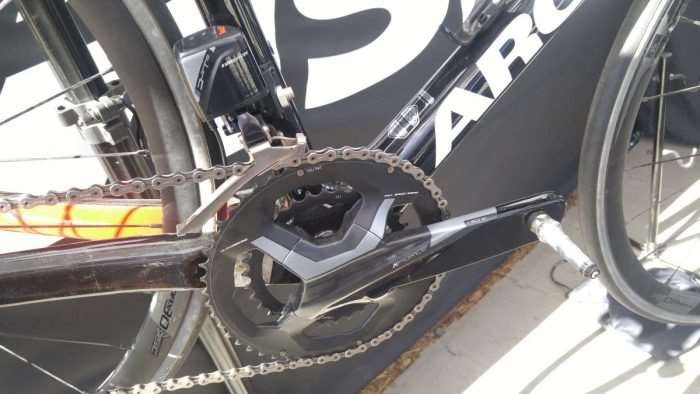
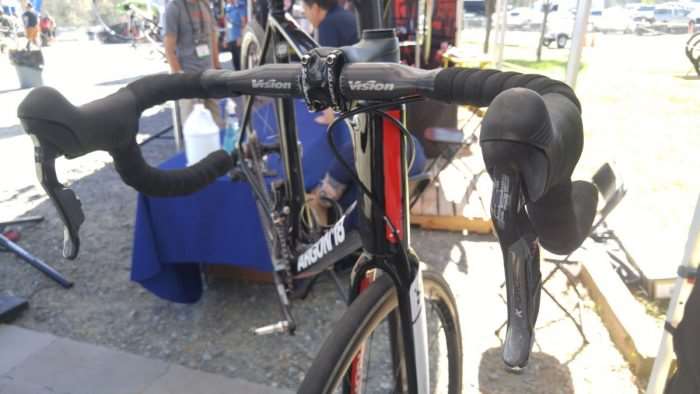
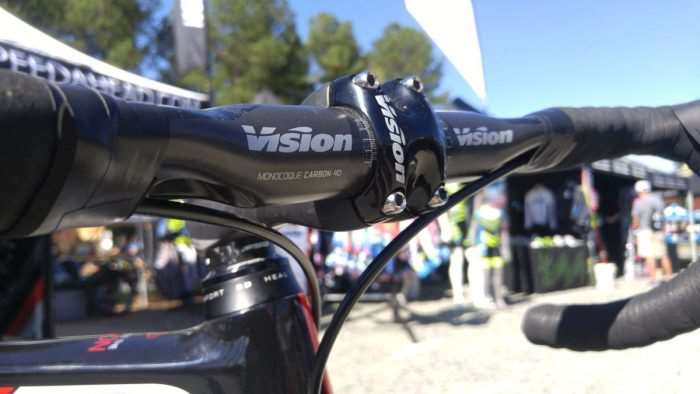
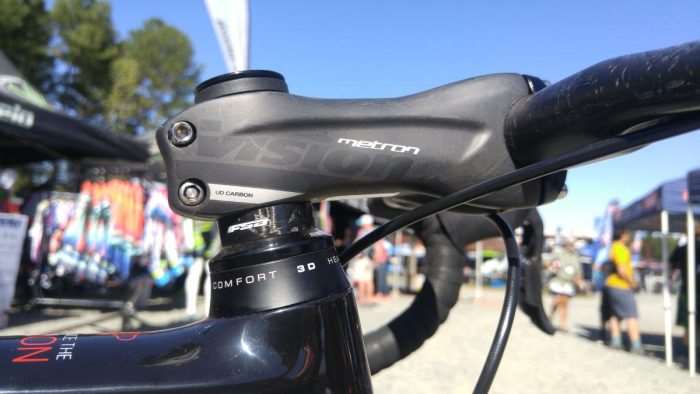
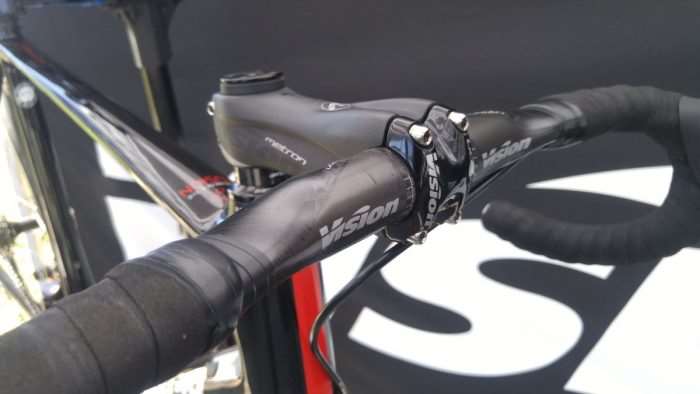
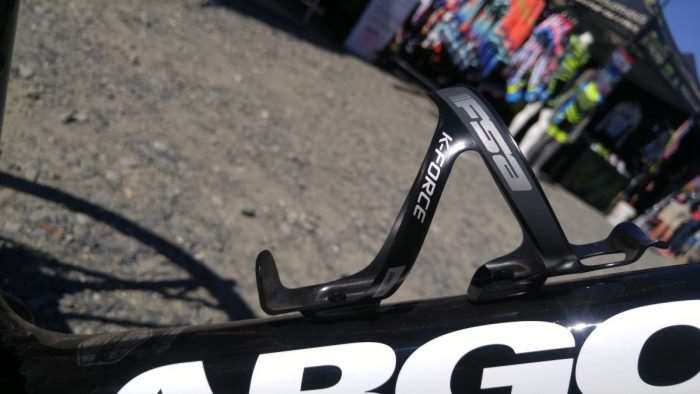
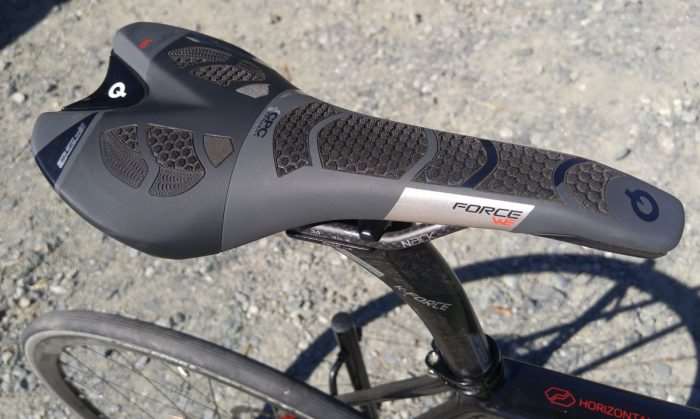
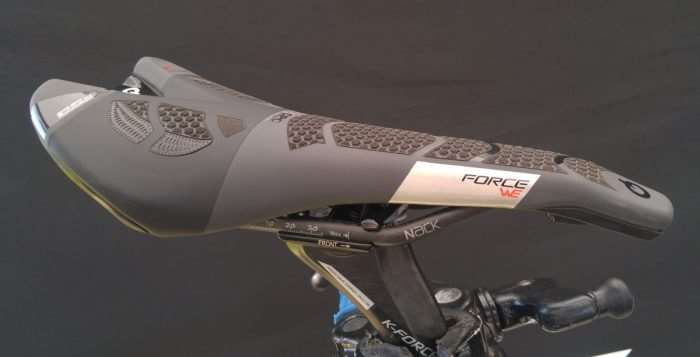
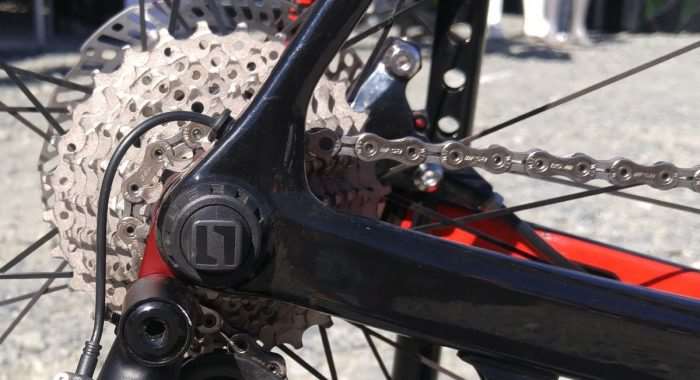
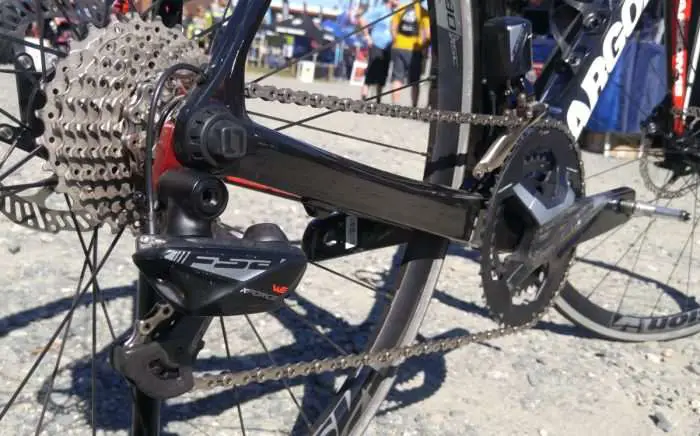
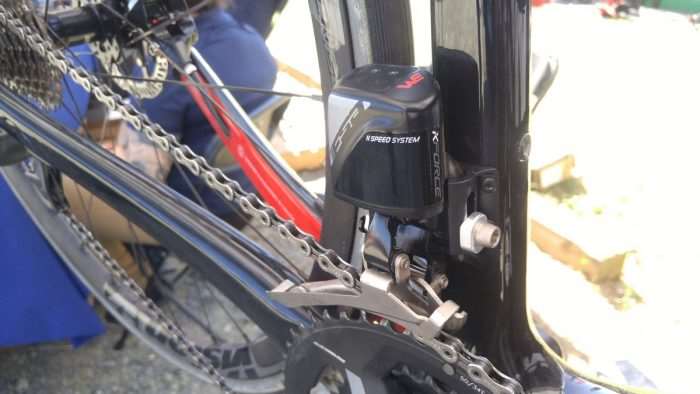
Hmmmm – Frankly, my biggest complaint with the SRAM eTap Wifli gear set I’m using 0on my gravel bike isn’t battery life; but rather the limit to tire width of the front der. battery design. I can’t tell from your photo’s; but do you have a guess about how the geometry of the FSA WE front der. will effect rear tire clearance on gravel bikes? Otherwise, I’m very satisfied with the eTap system. On long road trips, or if my bike is in storage for awhile, I simply remove the batteries (a very simple no-tools operation), clip on their protective covers and stow them in a safe place. Also, if I forget to charge my batteries regularly, the rear battery usually goes before the front. But the batteries can be exchanged to convert to an emergency 1x system to get you home. They also fully charge in less than 1 hour.
There is that issue too… I mentioned the tyre clearance issue in my part one review of eTap… and to at least one of SRAM’s engineers.
I completely forgot to take a good photo of the tyre clearance between the tyre and rear quarters of the front derailleur. Hope to have more info about that soon, as poor clearance can be a potential deal killer.
My eTap batteries seem to go dead if I leave them sitting around for a month. My external Di2 battery for my time trial bike, last ridden two years ago, finally started flashing red when I checked it a day or two.
Hi JOM – thanks for the info. I haven’t left my eTap batteries idle for more than a few weeks. They are pretty small, so I guess they do require more frequent charging. My only complaint here, is that for $$$$$$ eTap costs, they could at least supply a charger that can charge 2 batteries simultaneously, or 2 chargers. BTW, I made sure that my new custom gravel bike frame had ports for Di2 wires ! SRAM seems to be really pushing hard on 1x drive trains. While I think 1x is appropriate for some bikes and riders, I still prefer 2x. Another advantage of Di2 is that I’m told you can use XT or XTR der’s with Ultegra Di2 brake shifters. This opens up a whole lot of low gear options for septuagenarian cyclists.
Confirmed, I have used hydro Di2 road levers with XTR Di2. In fact, I’ve got a brand new set of XT Di2 derailleurs I need to sell… if you know anyone interested…
Looks like the wireless part is just enough to work with a Ritchey Break-Away frame so that you don’t have to disconnect it to travel. All the wired parts would stay on the back end of the frame, assuming cable routing works. Does this system only work with internally routed wiring or is there an external battery option like Di2 has? Hard to retrofit a bike with this if it’s internal only.
Tom, I believe it’s internal only, but I don’t see why you couldn’t retrofit an older frame to work with it. I’ve been known to drill holes in older frames 🙂 The battery is designed for installation inside the seatpost.
Thanks. It would have to be a lot better than eTap to get me drilling. I look forward to your further reviews of it.
They lost me at this thing not working without a front derailleur.
Some of us love our front derailleurs, myself included. But I do have to say, I was a little surprised they designed the front derailleur to have the brains of the system. Definitely losing some sales there. Regardless, I’m looking forward to reviewing this groupset in the future.
Certainly; I don’t disagree that having the front derailleur OPTION is mandatory, but I think making the front derailleur a REQUIREMENT rather than optional wasn’t ideal.
-Ed
“so radiant.”
LoL.
I gad hogh hopes for this system but after readjng this a few things come to mind:
First is the tire clearance issue of the front derailleur with the rear tire – I’m disappointed to hear this. SRAM eTap is essentially off the table as I run 40s most of the time – and now the FSA system as well. I wonder if running 650b wheels will add some much needed clearance? There’s a project fir the awesine GC Twam to check out!
Second, while the design currently requires a FD, it is essentially a receiver and microprocessor (chip) that does serves as the “brains” so it would be fairly easy (actually very easy) for FSA to create a small box that could be attached below a waterbottle cage or, depending on their wireless protocol (carbon can block/limit some wireless systems) inside the seatpost with the battery, that does the “brainwork”. At the VERY least if you really like the system that much, just buy a full setup and chop the mechanical bits off the front derailleur. You could even chop the left side lever paddles and save a few grams… then there would be no annoying sound of the lonely solenoid moving for no reason.
Thanks for the great work you guys do! Keep it up!
Steve
Hi Steve – you can run 40mm on some gravel frames (most?) with the eTap front der. I can on both my custom 44Bike, and my Ritchie Swiss Cross. I believe that JOM has squeezed 40mm tires on his Swiss Cross and other test bikes running eTap. The eTap front der. becomes an issue however, if you want to run wider tires than 40mm. For the time being, I’m very satisfied with my eTap wifli gear set. Had I to do it again though, I’d probably go with Ultegra Di2 for it’s many options, better front der. design, and lower cost compared to eTap.
Bobk, thanks for the info! I appreciate the candid reply regarding Di2.
So I guess eTap is back on the table – but with some reservation. I really like the simplicity and lack of wires with eTap, and while the proven shifting of Di2 has its allure, I feel like as soon as I get Di2, Shimano will release a wireless system… Is Shimano’s front der. that much better?
I’ve got some thinking to do.
Steve
Another issue is the high cost of the eTap hydraulic brake shifters and calipers — especially if you want to buy them as a separate component upgrade ($1200). OTOH, I’ve been running my eTap wifli with TRP Spyre mech. disks. and 160 mm rotors. They are more than adequate for me, and weigh about 1/2 pound less than the eTap hydraulic shifters and calipers. I have no idea when or if Shimano will develop or release a wireless version. Shimano seems to be investing in improvement in Di2 such as improved synchronized shifting options. A big plus is that Di2 shifters are compatible with XT and XTR der. (you can’t mix Ultegra, XT, or XTR der’s). A great way to get wider gear range with fussing with sub-compact crank sets. Of course, Ultegra Di2 is much less expensive than eTap. I’ll probably upgrade my 44Bike to Ultegra Di2 hydraulic next year and install my eTap on my backup gravel bike, or my wife’s road bike.